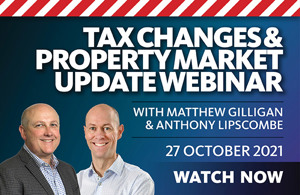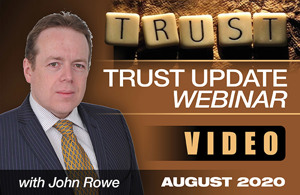
Warning To Solicitors, Accountants and Trustees/Trust Advisors...
BEWARE THE APPOINTOR IN NEW ASSOCIATED PERSONS RULES
(11 August 2009)
While the Finance and Expenditure Select Committee managed to weed out much of the over-reach of the new associated persons definition, there still appears to be a glaring problem in relation to the Trust to Appointor test in section YB 11.
In the Official's Report to the Finance and Expenditure Committee on submissions on the bill, the Committee was made aware of the potential for s YB 11, when coupled with the tripartite test, to lead to otherwise unrelated trusts being associated when professional advisors are nominated as appointors. This valid concern was raised by Tomlinson Paull and whilst accepted by the Committee, not enough has been done to prevent the undesirable outcome of otherwise unrelated entities from being associated to each other.
As background, this is about association rules between dealers in land, developers or builders and other entities in the business of buying and holding property that are 'related' by the associated persons rules. The concern is that if associated, an entity buying property to hold will be taxable on capital gains on properties sold within ten years of acquisition, if at time of acquisition the buy-to-hold entity was associated to a dealer, developer or builder.
The rules are changing and are much wider than they were, introducing the prospect of:
- Tainting professionals (and their private assets) if they act as appointors or hold an equivalent power; and
- Tainting other clients' assets inadvertently through such association. This raises the potential for negligence, and the prospect of uncertainty in enforcement.
Tainting Detail
Section YB 11 in the new Taxation Remedial bill associates trustees of a trust with the person or people who hold the power to appoint and remove trustees. In short, a trust is associated with its appointors. The tripartite test at s YB 14 associates two parties where there is a common associate of both provided that the common associate is not associated to the two parties under the same rule.
For this reason, if a professional holds the Power of Appointorship in respect of a trust (being Trust “A”) and then holds the Power of Appointorship in a second trust (Trust “B”), there will not be association between the two trusts under the tripartite provision as the common associate (being the advisor) is associated to both Trust A and B under the same test.
The Select Committee held this limitation out as being the reason why there would not be unintended trust to trust association. Whilst it is true this will prevent an advisor who holds this power in respect of multiple trusts from creating inadvertent association between the trusts, the door is still left wide open for there to be association on a far wider scale than surely could have been intended.
To explain further, consider the situation where an advisor accepts a role as appointor in relation to a trust that is going to buy an investment property. The appointor is related to the trust under s YB 11. The same appointor might also own shares in a development company, perhaps be settlor of a second trust (otherwise unrelated to the first) that is involved in property development or might even be deemed to hold shares in a company involved in development under s YB 3.
What this demonstrates is that there is a raft of other provisions that might associate otherwise unrelated trusts or companies to the appointor then leading to association between these other entities and the first trust under s YB 14. This is obviously not a problem that is fixed by the exclusion of not being able to apply the same rule twice in s YB 14.
Negligence Prospect
Of course reading this you might say that the advisor in that instance would be negligent in accepting the role of appointor given that they should be aware that they are associated to a development company, and you may be right. What taxes could arise from this on other clients' assets as a result of this oversight?
Thirty percent of capital gains in the next ten years on assets acquired during the period of association would be an approximation of the answer. However, there might be situations that arise where the advisor has less control over the matter.
Whilst uncommon, it is not completely unheard of for an advisor to be a “back up” appointor in respect of a trust when the original appointors die. Or what if a client decides to start trading / developing / building property in their trust that you are appointor in and does not tell you? Or what if IRD deem such activity to have existed?
Summary
It seems clear to us that this is a flaw in the associated persons provisions that was quite rightly raised before the Select Committee, but their proposed solution does not work.
The moral of the story clearly is to be careful whom you nominate as an appointor in respect of your trusts both now and in the future. It can lead to unwanted consequences.
A brief background on the new associated persons rule changes (if you are interested) is here.
Remember these blog articles address the general public and are therefore simplified for the intended reader.
If you would like help with understanding how this affects you, or have a question, we are here to help. You can Request a Free Interview or use our Ask the Experts service.
Until next time,

Matthew Gilligan
Managing Director and Property Services Partner
Did you like this article? Subscribe to our newsletter to receive tips, updates and useful information to help you protect your assets and grow your net worth. We're expert accountants providing expert advice to clients in NZ and around the world.
Disclaimer: This article is intended to provide only a summary of the issues associated with the topics covered. It does not purport to be comprehensive nor to provide specific advice. No person should act in reliance on any statement contained within this article without first obtaining specific professional advice. If you require any further information or advice on any matter covered within this article, please contact the author.
Comments
Testimonials
Really enjoyed the school. Learnt so much. I liked the real life examples - they were relatable. And the passion of the presenters. Also thought the books were very valuable as a learning tool. - Greg, June 2018
Property 101by Matthew Gilligan
Investing in residential property?
Put this at the top of your reading list.
If you're investing in residential property, seeking to maximise your ability to succeed and minimise risk, then this is a 'must read'.
Matthew Gilligan provides a fresh look at residential property investment from an experienced investor’s viewpoint. Written in easy to understand language and including many case studies, Matthew explains the ins and outs of successful property investment.
- How to find the right property
- How to negotiate successfully
- Renovation do's & don'ts
- Property management
- Case studies and examples
- and much, much more...









































